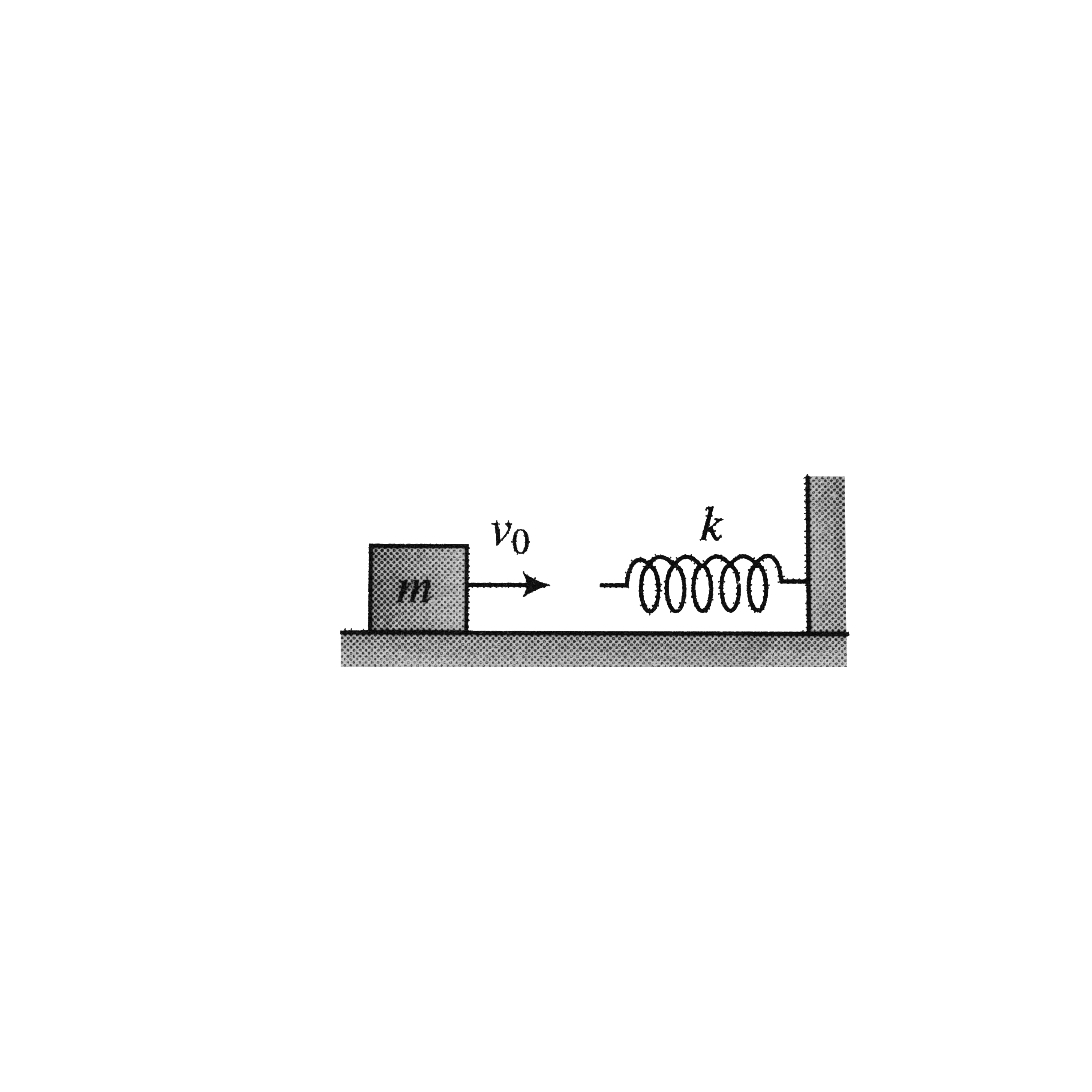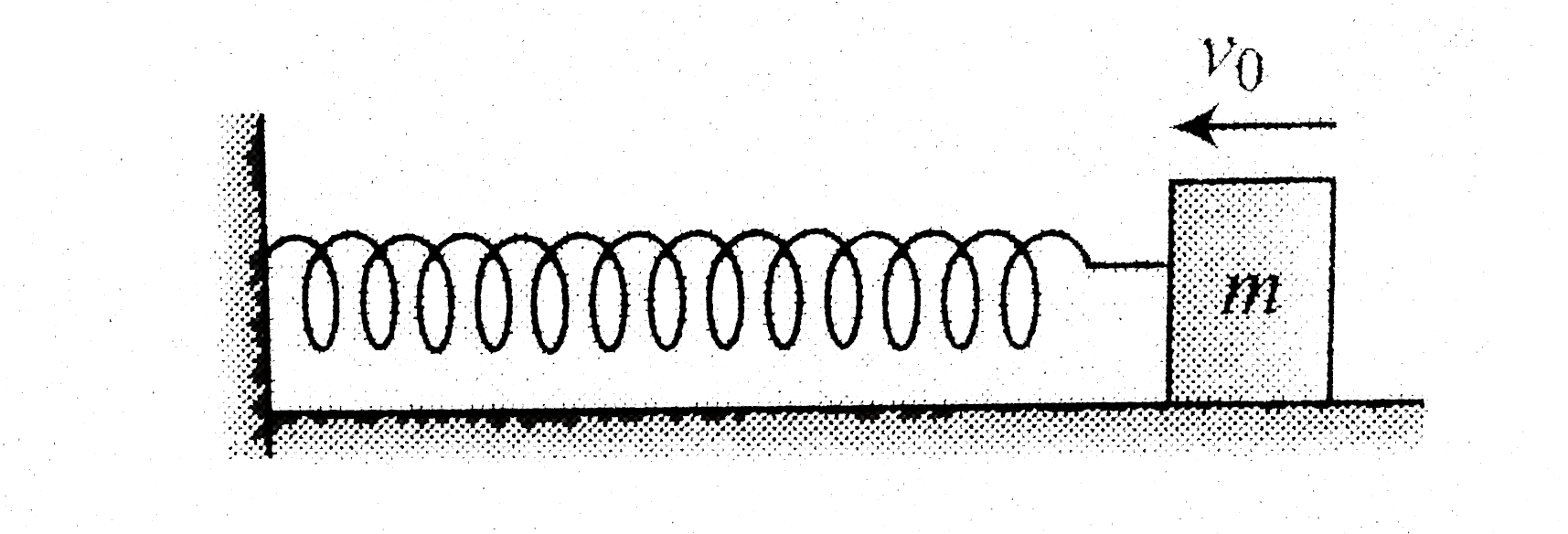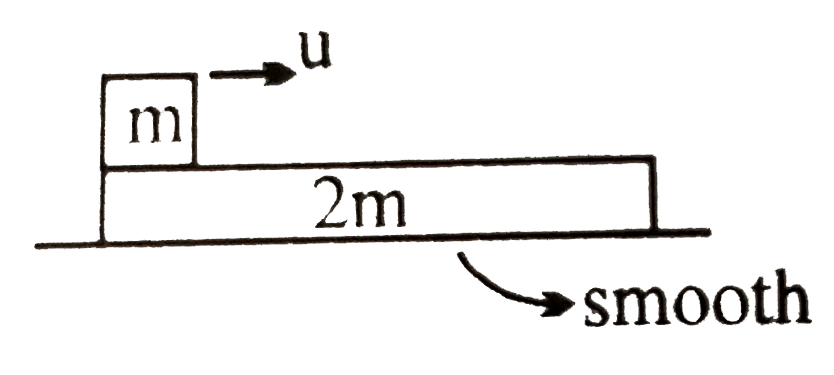Consider the situation of the previous question from a frame moving with a speed v0 parallel to the initial velocity of the block? b. What is the work done by the kinetic friction?Solution in Tamil
Step by step video & image solution for Consider the situation of the previous question from a frame moving with a speed v_0 parallel to the initial velocity of the block? b. What is the work done by the kinetic friction? by Physics experts to help you in doubts & scoring excellent marks in Class 11 exams.
Topper's Solved these Questions
- BOOK - HC VERMACHAPTER - WORK AND ENERGYEXERCISE - Objective -110videos
WORK AND ENERGY
- BOOK - HC VERMACHAPTER - WORK AND ENERGYEXERCISE - Objective -29videos
WORK AND ENERGY
- BOOK - HC VERMACHAPTER - WORK AND ENERGYEXERCISE - Worked out Examples14videos
WORK AND ENERGY
- BOOK - HC VERMACHAPTER - WAVE MOTION AND WAVES ON A STRINGEXERCISE - Exercises57videos
WAVE MOTION AND WAVES ON A STRING
Similar Questions
A heavy stone is thrown from a cliff of height h with a speed v. The stone will hit the ground with maximum speed if it is thrown
03:30View SolutionA heavy stone is thrown from a cliff of height h with a speed v. The stone will hit the ground with maximum speed if it is thrown
04:06View SolutionA porter lifts a suitcase weighing 20 kg from the platform and puts it on his head 2.0 m above the platform. Calculate the work done by the porter on the suitcase.
03:46View SolutionA wave pulse passing on a string with speed of 40cms−1 in the negative x direction has its maximum at x=0 at t=0. Where will this maximum be located at t=5s?
04:33View SolutionA ball is given a speed v o a rugh horizontal surface. The ball travels through a distance l on the surface and stops. A. What are the initial and final kinetic energies of the ball? b. What is the work done by the kinetic friction?
06:13View SolutionA block of mass m is moving with an initial velocity v0 towards a stationary spring of stiffness k attached to the wall as shown in figure

a. Find the maximum compression in the spring.
b. Is the work done by the spring negative or positive?04:03View SolutionIn the previous question, if a>μsg, find the work done by friction on the block during time t.
08:50View SolutionA block of mass m is connected with a rigid wall by light spring of stiffness k. Initially the spring is relaxed.

If the block is pushed with a velocity v0, it oscillates back and forth and stops. Assuming μ as the coefficient of kinetic friction between block and ground, find the work done by friction till the block stops.01:47View SolutionA block of mass m is given velocity v_0 on a rough horizontal surface. After traveling a distance d. Its speed becomes (v_0)//(2) . Find the work done against friction. The work donw by friction and the coefficient of friction.
05:12View SolutionFind total work done by friction assuming plank is sufficiently long.

Solve this question in both ground frame and C-frame.08:21View SolutionThe block of mass M in figure -4.160, initially has a velocity v_(o) to the right and its positionis much that the spring exerts no froce on it, i.e, the spring is not stretched or comkpressed. The block moves to the right a distance l before sttoping in the dotted position shown. The speing constant is k and the coefficeent of kinetic friction between block and table is mu. as the block moves the distance l, what is the work done on it by the friction force ? (b) What is the work done on it by the spring force ? (c) are there other forces actionon the block, and if so what work do they do ? (d) what is the total work done on the block? (e) find the value of l.
02:32View SolutionSTATEMENT-1 Work done by static friction in any reference frame is zero
STATEMENT-2 If work done on the body is positive its kinetic energy increases.10:19View SolutionA block of 10kg mass is thrown on a rough surface having friction coefficient 0.3 with an initial speed of 5 m/s. Find the amount by which the internal energy of the blocked and the surface will increase. If this block is seen from a frame moving at a speed of 5 m/s in the direction of its velocity it is observed that the block is gently put on the rough surface moving in opposite direction at speed 5 m/s. Find the gain kinetic energy of the block as seen from this frame.
09:19View SolutionA block starts moving up an inclined plane of inclination 30∘ with an initial velocity of v0 . It comes back to its initial position with velocity v02 . The value of the coefficient of kinetic friction between the block and the inclined plane is close to I1000 , The nearest integer to I is ____________ .
02:10View SolutionA ball is given a speed v on a rough horizontal surface. The ball travels through a distance l on the surface and stops. A. What are the initial and final kinetic energies of the ball? b. What is the work done by the kinetic friction?
02:27View SolutionA 100 kg block is started with a speed of 2.0ms−1 on a long, rough belt kept fixed in a horizontal position. The coefficient of kinetic friction between the block and the belt is 0.20. (a) calculate the change in the internal energy of the block-belt system as the block comes to a stop on the belt. (b) consider the situation from a frame of reference moving at 2.0ms−1 along the initial velocity of the block. as seen from this frame, the block is gently put on a moving belt and in due time the block starts moving with the belt at 2.0ms−1, calculate the increase in the kinetic energy of the block as it stops slipping past the belt. (c ) find the work done in this frame by the external force holding the belt.
03:53View Solution

